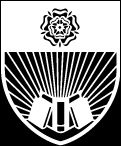Ariana – Year 12 Student
Editor’s note: This short essay was recently entered into the GSAL Black History Essay Writing Competition, organized by The GSAL Journal and UPSoc to coincide with Black History Month. Open to all students in Year 10-13, the purpose of the competition was to encourage students to undertake independent research, think critically and communicate clearly about an aspect of black history of interest to them. The Competition Poster provides more information about the competition brief and success criteria. CPD
Katherine Johnson, who graduated with a degree in mathematics at 18, played a critical part in getting the first American into Space. She fought for her position at NASA during the 1950s when racial segregation was commonplace in America.
Johnson was born in 1918 in White Sulphur Springs, West Virginia. From an early age, she showed complex mathematical abilities and was enrolled in a high school when she was only ten years old. Only 10? She then graduated from high school at age fourteen and took every maths course offered by the college she then attended. In fact, one of her mentors, W.W. Schieffelin Claytor (who was the third African America to receive a Ph. D) added new courses just for her. At eighteen, she graduated with honours with a degree in maths and French.
Since she clearly had a talent for maths, she of course wanted to continue her career in this field; however, this was an incredibly difficult field for African Americans, and women, to enter. After hearing that NASA (NACA at the time) was hiring mathematicians, Johnson accepted a job offer from them in 1953.
During this time, segregation was rife in America. Johnson and her other African American peers were forced to use separate areas to eat, work and use the restroom. Johnson worked in a group of women who all performed complex math calculations, who were referred to as virtual “computers who wore skirts”. Their office was labelled as “coloured computers”. During an interview, Johnson said she “didn’t feel the segregation at NASA since everybody there was doing research. You had a mission and you worked on it, and it was important to do your job.”
Katherine was temporarily assigned to help the all-male flight team one day. Due to her knowledge of analytic geometry, she fit in perfectly to such an extent that “they forgot to return me to the pool” (where Johnson originally worked). Katherine always said she ignored the racial barriers even though she knew they were always there. She was incredibly assertive and didn’t shy away from being included in meetings (where no woman had gone before). She simply said that she had done the work and that she belonged.
In 1958, NACA abandoned the coloured computing pool when NASA took over the agency who adopted digital computers. Even though the agency was desegregated, there was of course still forms of discrimination everywhere.
When recalling this time, Johnson said that women needed to be “assertive”. In the early days, women were not allowed to put their names on reports. However, after her supervisor had said that “Katherine should finish the report, she’s done most of the work anyways” she finished the report and got her name on it. This was the first time that a woman in her division had her name on something.
Her legacy lives on in many ways. Numerous schools and education facilities are named after her and in addition to this, two NASA facilities also have been named in her honour. Her life was portrayed in the movie “Hidden Figures” which was released in December 2016, revealing her incredible life to millions worldwide. Following her death in 2020, she was named an American hero and NASA’S administrator, Jim Bridenstine, stated that “her pioneering legacy will never be forgotten.” Ariana

